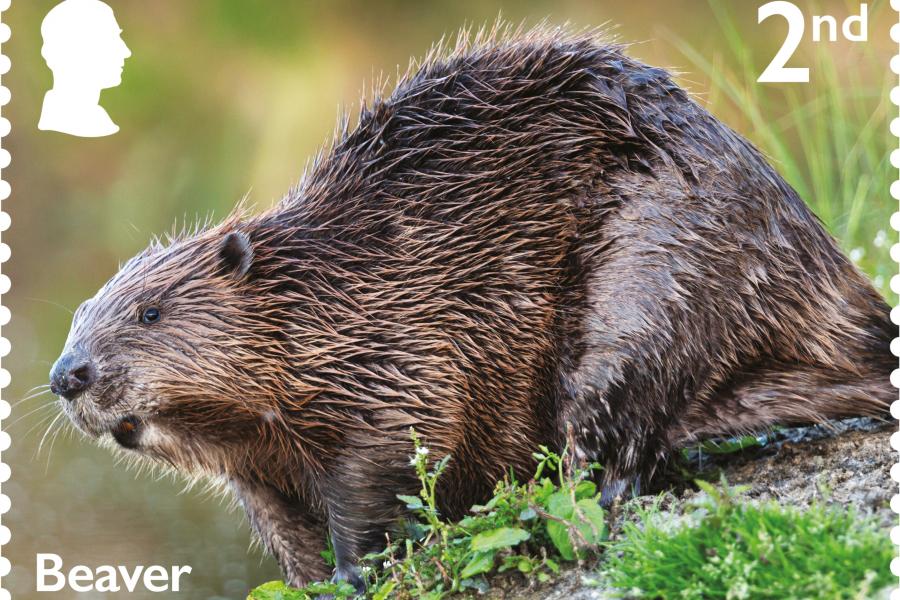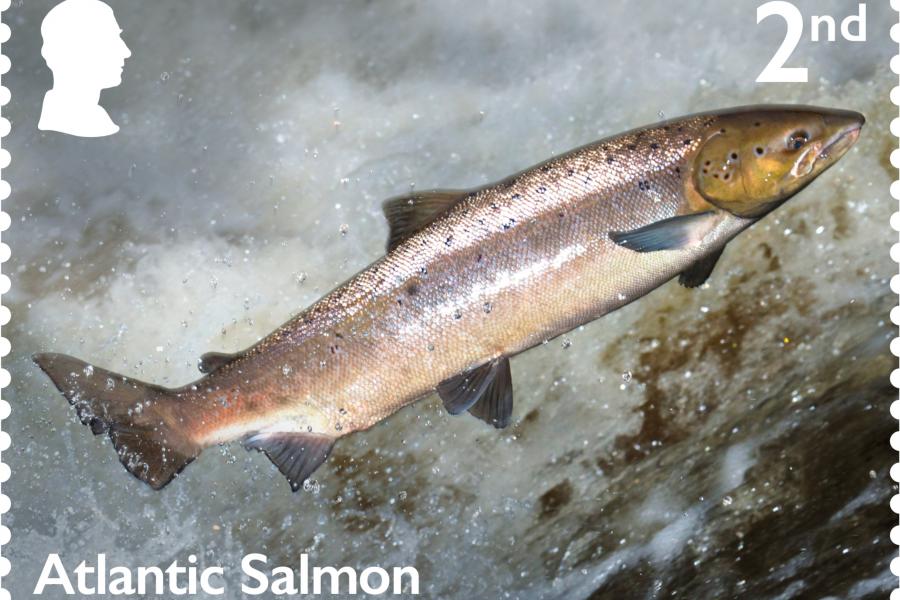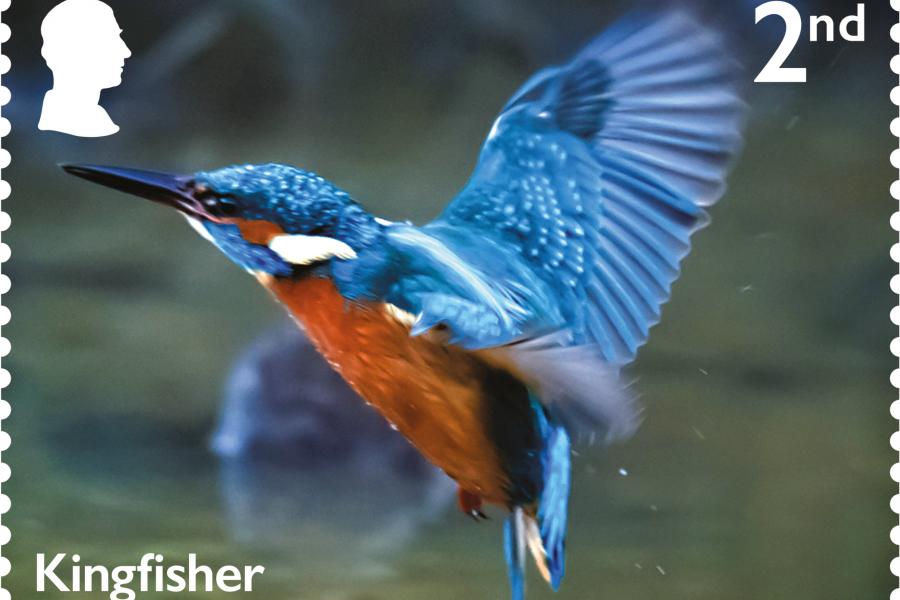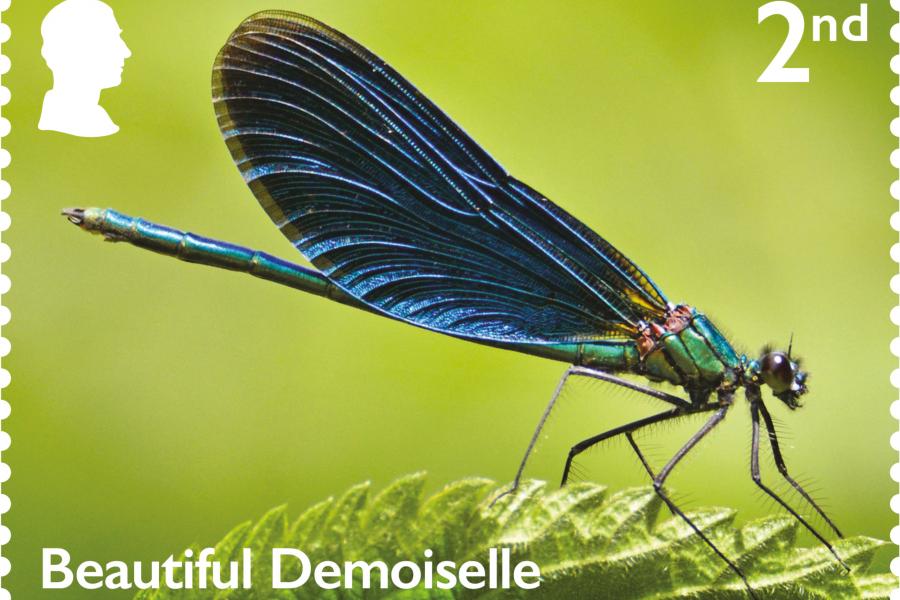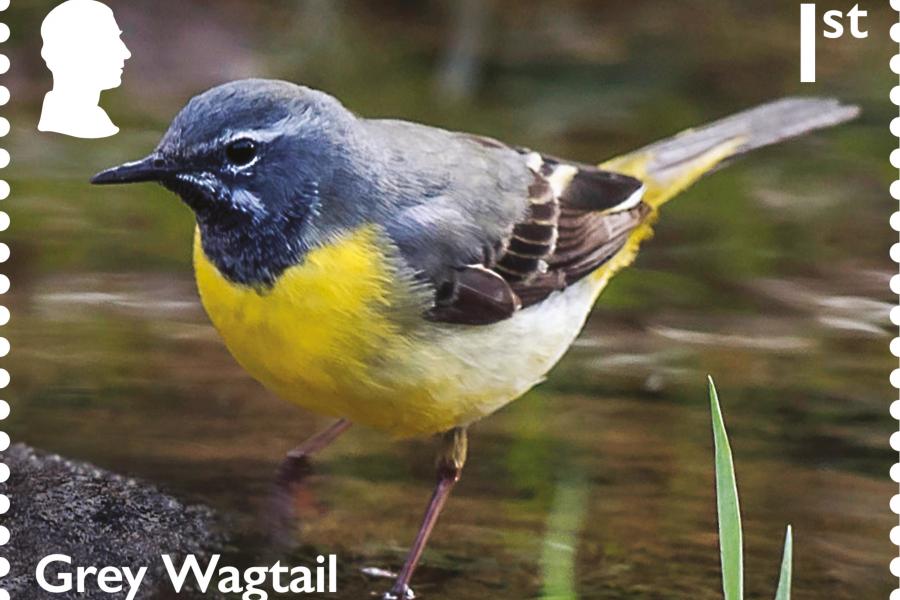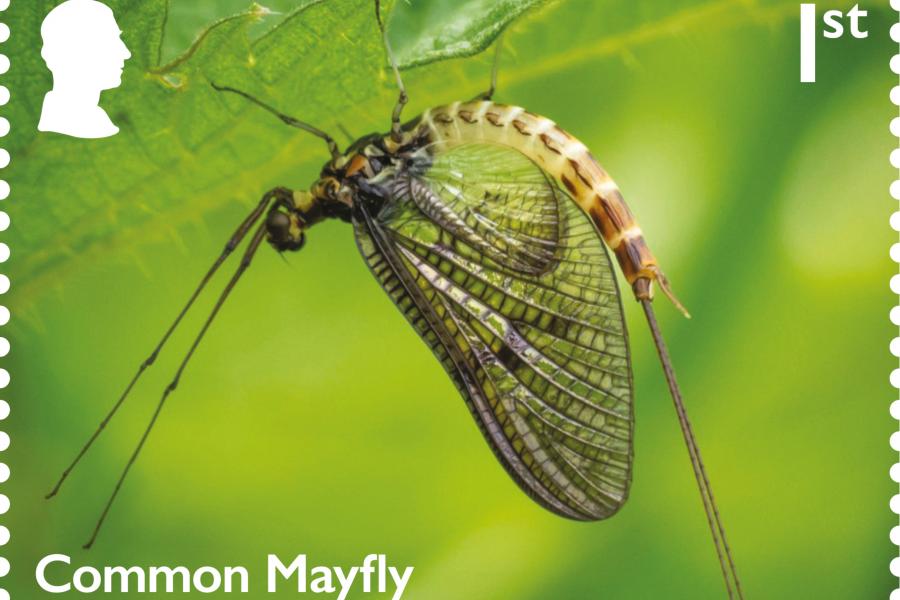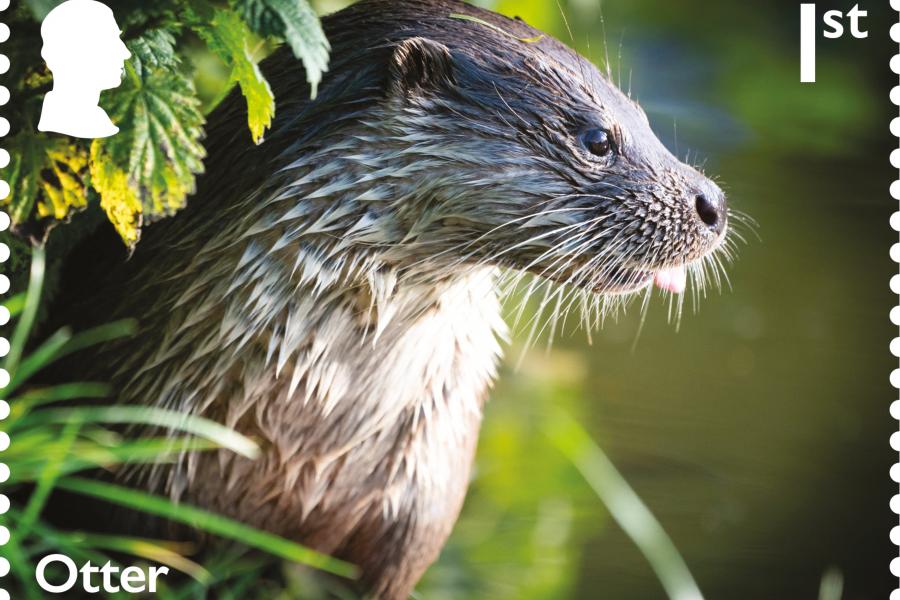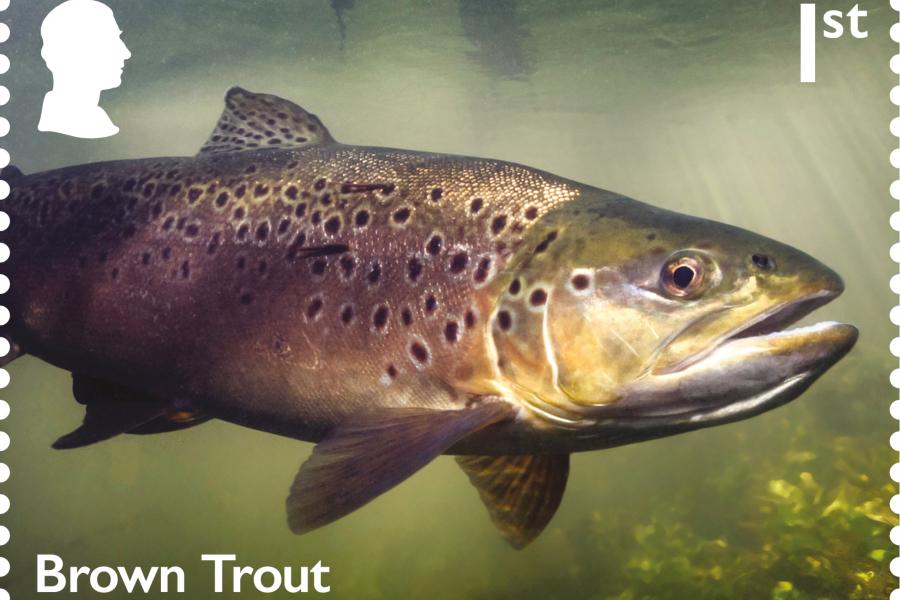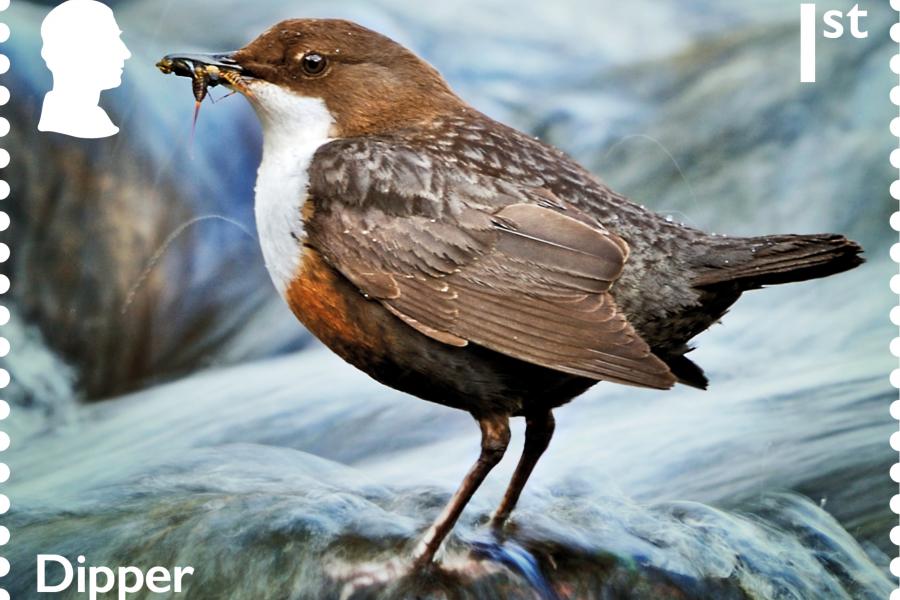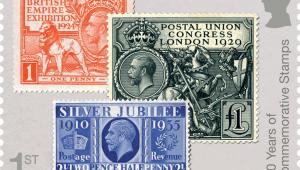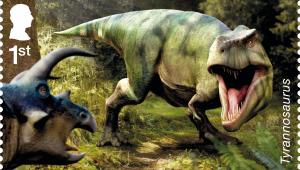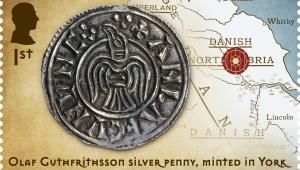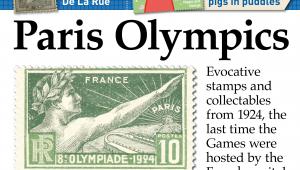River Wildlife
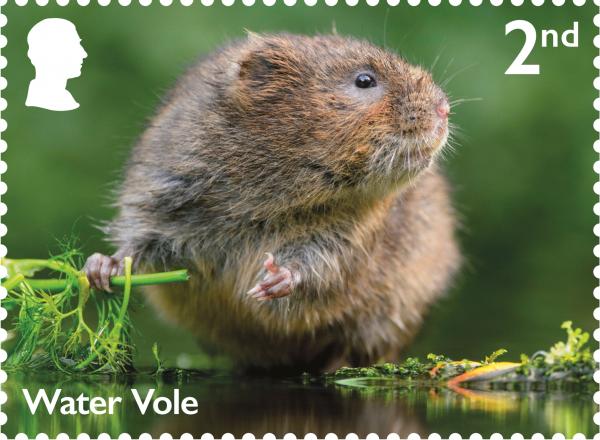
From the streams, becks and burns rising in mountain landscapes to the wide rivers of the lowlands, Britain has more than 230,000 miles of flowing water.
They are among the most important of all ecosystems, shaping the landscape and supporting a remarkable diversity of animals which are perfectly adapted to living in and around rivers.
Few watercourses have remained unaffected by pollution, climate change, abstraction for water supply and modification for flood-risk management, so they need to be protected carefully to minimise the impact of human activity.
But the stamps, which reproduce photographs of three mammal, three bird, two fish and two insect species, remind us of the spectacular biodiversity which can thrive in healthy rivers.
Designed by Studio Up, the stamps were printed in litho by Cartor, and come in se tenant strips of five.
2nd class BEAVER
Recently reintroduced in several regions, the Eurasian beaver is superbly adaptated to aquatic life, with webbed hind feet, a flat tail for steering, and eyes, ears and nostrils positioned high on its head to remain above water when swimming. Even more amazing are the dams and lodges it engineers out of riverside trees and branches.
2nd class ATLANTIC SALMON
The migratory lifecycle of the Atlantic salmon sees it born in the headwaters of larger rivers, develop into a seaward-bound ‘smolt’, spend one to four years at sea and then return as an adult to its natal river to breed. This complex journey exposes it to multiple dangers, and its numbers are declining precipitously.
2nd class KINGFISHER
This most vivid of birds is often spotted as a semi-iridescent flash of sapphire, cobalt and ochre flitting low across a river. Yet the kingfisher's feathers contain no blue pigment, and its apparent colour is created simply by the reflection of light. It prefers low-gradient rivers with sandy banks for nesting and small fish to eat.
2nd class BEAUTIFUL DEMOISELLE
Unlike many damselflies, the beautiful demoiselle prefers rivers to lakes. The predatory nymphs lurk in gravel beds, and the delicate adults perform fluttering courtship flights around bankside vegetation. The males are metallic blue, the females bronze-green.
2nd class WATER VOLE
Bigger than other voles, the European water vole is chestnut brown in England but can be almost black in Scotland. It is in rapid decline, due to habitat loss, intensive agriculture and predation by non-native mink, but can thrive in reedbeds, backwaters and riverbanks.
1st class GREY WAGTAIL
Much more colourful than its name suggests, the grey wagtail feeds either by picking aquatic invertebrates from shallow river margins or by catching adult insects in flight. Larger insects such as beautiful demoiselles and mayflies are among its favourites.
1st class COMMON MAYFLY
The common mayfly bursts into view in May or June, flying in large numbers over the water. But the unseen prelude to this is spending two to three years as a nymph, burrowed into sand and gravel beds or under aquatic plants, oscillating its feathery gills to boost its oxygen intake.
1st class OTTER
Related to weasels, ferrets and martens, the Eurasian otter is perfectly adapted to aquatic life, with its webbed feet, thick fur, small ears and streamlined shape. It feeds on eels, salmonid fish and crayfish, opportunistically also taking amphibians and waterfowl.
1st class BROWN TROUT
Spangled by dark or reddish spots on its golden upper surface, the brown trout thrives in well-oxygenated rivers, feeding on invertebrates that drift with the flow or fall from surrounding vegetation. Migrant sea trout have a different lifecycle, spending part of their adult life in coastal waters.
1st class DIPPER
Known for its penchant for bobbing up and down, the white-throated dipper will walk, swim or dive in fast-flowing waters, feasting on nymphs, larvae and small fish. It is declining along rural rivers affected by agricultural pollution, but has recolonised formerly polluted urban waterways.
ADDITIONAL PRODUCTS
Written by Professor Steve Ormerod, the presentation pack showcases the spectacular ecosystem of rivers and explores their diversity as a habitat.
A first day cover and stamp cards are available as usual.
PRICES
Set of 10 stamps £9.25
Presentation pack £10.15
First day cover £11.75
Stamp cards £4.50
VERDICT
COMMEMORATIVE WORTH 3/5
This is an unashamedly thematic set, but Britain’s stunning wildlife is always worth a closer look
QUALITY OF DESIGN 3/5
Issues of this kind are about photography rather than design, and many of the images are gorgeous
WOW FACTOR 3/5
These stamps are unlikely to be a major talking point, although they would look great on your personal mail
